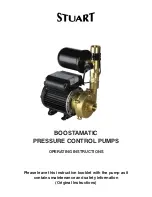
9 ENGLISH
Model DTW284
Proper fastening torque for standard bolt
0
M20
M16
M16
M20
M12
M12
1
2
280
240
200
160
120
80
40
1
2
N•m
1.
Fastening time (second)
2.
Fastening torque
Proper fastening torque for high tensile bolt
1
2
3
280
240
200
160
120
80
40
1
2
N•m
0
M12H
M14H
M16H
M12H
M14H
M16H
1.
Fastening time (second)
2.
Fastening torque
Model DTW285
Proper fastening torque for standard bolt
0
M20
M16
M16
M20
M12
M12
1
2
280
240
200
160
120
80
40
1
2
N•m
1.
Fastening time (second)
2.
Fastening torque
Proper fastening torque for high tensile bolt
0
160
120
80
40
200
2
3
1
M12H
280
240
M14H
M16H
M12H
M14H
M16H
1
2
N•m
1.
Fastening time (second)
2.
Fastening torque
NOTE:
Hold the tool pointed straight at the bolt or nut.
NOTE:
Excessive fastening torque may damage the
bolt/nut or impact socket. Before starting your job,
always perform a test operation to determine the
proper fastening time for your bolt or nut.
NOTE:
If the tool is operated continuously until the
battery cartridge has discharged, allow the tool to rest
for 15 minutes before proceeding with a fresh battery
cartridge.
The fastening torque is affected by a wide variety of
factors including the following. After fastening, always
check the torque with a torque wrench.
1. When the battery cartridge is discharged almost
completely, voltage will drop and the fastening
torque will be reduced.
2.
Impact socket
•
Failure to use the correct size impact socket
will cause a reduction in the fastening torque.
•
A worn impact socket (wear on the hex end
or square end) will cause a reduction in the
fastening torque.
3. Bolt
•
Even though the torque coefficient and the
class of bolt are the same, the proper fasten-
ing torque will differ according to the diame-
ter of bolt.
•
Even though the diameters of bolts are the
same, the proper fastening torque will differ
according to the torque coefficient, the class
of bolt and the bolt length.
4. The use of the universal joint or the extension
bar somewhat reduces the fastening force of the
impact wrench. Compensate by fastening for a
longer period of time.
5. The manner of holding the tool or the material
of driving position to be fastened will affect the
torque.
6.
Operating the tool at low speed will cause a reduc-
tion in the fastening torque.










































